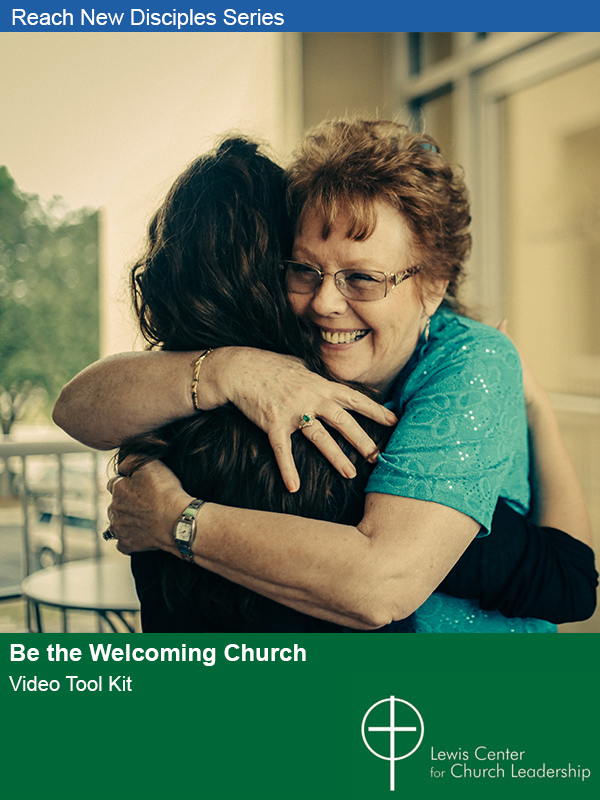Ann Michel of the Lewis Center staff says that churches need to think outside the box when seeking to involve new people in ministry and leadership. Church membership or even church attendance should no longer be the assumed starting point in the process.
Are you sensing a new level of challenge when it comes to engaging congregants in ministry and service? If so, you’re not alone. In our post-attractional, post-pandemic era, church attendance patterns have shifted dramatically, people have been slow to reengage in volunteer activities, and people’s overall life patterns and priorities for using their time are in flux. While many of our time-honored methods of engaging people in ministry are still valid, necessary, and good, they seem insufficient to the challenges or our day.
Most of our standard strategies for engaging volunteers and ministry participants appeal to people who are already in the pews. But in an era when fewer and fewer people find their way into churches on Sunday mornings, when even our most faithful attendees may only be present a couple of Sundays a month, when more people connect online, we are fishing in a smaller and smaller pond if we focus our efforts primarily on those in church on Sundays. The situation begs us to view the question of how to involve people in ministry and leadership through a larger lens.
Reversing the flow of our thinking
First, we need to reverse the flow of our thinking. We have long assumed that the standard pattern of engagement starts when someone joins a church, and then, subsequent to that decision, they get involved in church community, form relationships, join activities and ministries, and become leaders. But we can no longer view church membership or even church attendance as the assumed starting point for any of these steps in the process.
In a post-attractional world, we need to build relationships with and extend community to people before they join our churches, perhaps even before they darken the doors of our buildings. And that means inviting people to engage in groups, activities, community service, mission, and even leadership as ways of leading them toward the church and toward faith, rather than waiting until they show up on our doorsteps.
Thinking outside the box
My church has a ministry that distributes bag lunches to the homeless living on our city’s streets. Not long ago, I boarded the van to take part in this activity and I found myself serving with a young couple I’d never met before. When I asked them which of our worship services they attended, they said, “Oh, we’re not members of your church. But we live in the neighborhood, and when we searched the internet for volunteer activities, we found your online sign-up.” I was quite honestly taken by surprise.
I know a pastor who sensed a need to revitalize her church’s choir but, when she looked out at her aging congregation, she knew the right voices weren’t there. So, she put an ad on Craigslist for people interested in singing in a choir and she too was surprised. Turns out there were people in the community who liked to sing and were interested in being part of a choir. They just hadn’t found their way to the church yet.
I know another pastor who was asked to sit on the board of a community nonprofit. He said, “I will if someone from your nonprofit will become part of our church’s governing board.” What a surprising idea! Drawing experienced leadership into the church from a partner organization.
Developing a new playbook
What can we learn from examples like these? One lesson clearly is the potential of online communication in making our activities and service opportunities visible and accessible outside the walls of our churches. It’s a way we can leapfrog beyond our Sunday morning attendees. But that’s only the first step. How then do we build relationships with people who engage in these ways, connect the dots, and help them understand how their desire to sing or serve or lead connects with the church’s mission, with Jesus, and with God? Most churches don’t have a playbook for this, but we need to develop one.
The same is true regarding digital engagement. Many churches have made great strides in digital ministry since the pandemic. But few churches have well-developed plans for engaging and activating those who worship remotely.
In an era when so many of standard paradigms of ministry are showing themselves to be inadequate to the challenges of the day, the church needs to embrace creative “both/and” thinking when it comes to engaging volunteers, ministry participants, and new leaders.
Related Resources
- Create New Entry Points by Doug Powe and Jasmine Smothers
- 5 Practices That Help Newcomers Get Involved by Ann A. Michel
- 50 Ways to Increase Active Engagement, a free Lewis Center resource
Image by dooder on Freepik







